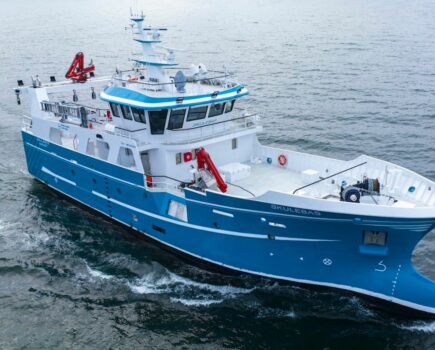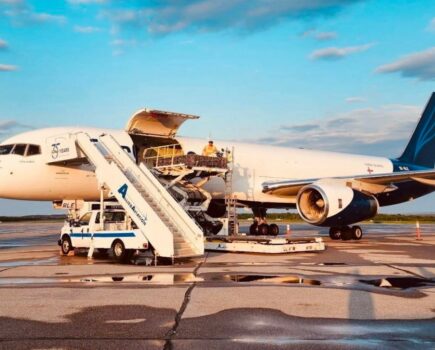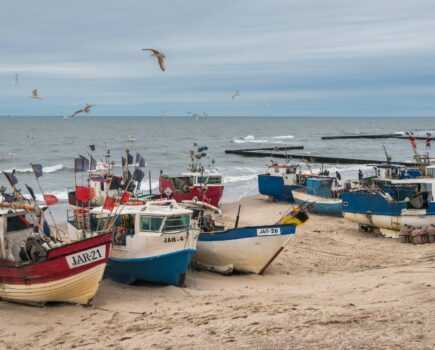A team from Liverpool John Moores University, led by Professor Stefano Mariani, is developing a testing method with the potential to help stamp out the fraudulent fish sales that damage consumer confidence
BY STEFANO MARIANI
Those who spend time at sea, and are truly connected with its living resources, will be familiar with the looks of a cod or a whiting, and will surely spot the differences between a plaice and a turbot at a glance. But the reality is that the vast majority of consumers have a very poor knowledge about the appearance of fish species, and all too often can be conned into buying mislabelled and poor-quality fish that puts them off a second purchase.
Our work on the SEATRACES project confirmed that the general public fails to visually recognise even the most popular fishes when presented with their whole fresh appearance.
This progressive detachment from nature is an inevitable consequence of city life and the way food commodities are traded, and has particularly huge ramifications in the case of fishery products, which are far more biologically diverse and less understood than any other food we consume. Poor consumer knowledge leaves the door open to species substitution, which can damage both consumer perception and the fishers’ rewards.
DNA testing offers a robust approach to expose this malpractice, as we demonstrated in a recent study looking at the catering trade in Spain. The problem isn’t new, and it affects the UK markets too, with substitution often involving the provision of species from poorly managed fisheries in remote locations, obtained through cheap labour.

Following blind tests with the MMO in North Shields in 2020, the SEATRACES system was adopted to help officers confirm fish species identity in investigations where whole fish were not available for ready visual identification.
Whilst DNA analysis protocols for seafood identification are available pretty much everywhere, they generally require several days of work in approved labs.
Our work has helped with the development of rapid methods, which work pretty much like a Covid-19 lateral flow test, but can only be used for a single target species.
However, our project also introduced a potentially game-changing approach, which combines the three most desirable features of an ideal DNA testing tool – speed, portability and universality – into a single system. The method is called FASTFISH- ID and is based on a real-time assay, which can be carried out anywhere, and produces results for a myriad of possible species.
We were able to work alongside the Marine Management Organisation (MMO) and demonstrate the power of this approach testing fish fillets in North Shields. The success of this exercise convinced the MMO to adopt FASTFISH-ID for rapid authenticity testing as part of its ongoing compliance work.
The method is very simple, inexpensive, and can be operated by anyone without any previous knowledge or training in molecular biology. The instruments required all fit in a small suitcase, and the reagents are stable for many hours outside a fridge.
The only limitation is that the results must be matched against a database containing the profiles of the possible fishes that can be encountered, be it at a supermarket, a processing plant, a landing site, or anywhere else. The database currently includes reference profiles for over 100 species, including the most commonly fished and traded ones, while efforts are ongoing to further expand it.

Simple Covid-type testing kits can identify where cheaper, poorer-quality species are being passed off as more expensive ones. Such practices can undermine consumer confidence in the quality of their purchases, reducing demand and the prices paid to fishers.
We are also exploring an even more portable and universal approach, based on ‘nanopore’ sequencing technology, which utilises a machine smaller than a mobile phone that directly sequences the DNA from a fish sample. This isn’t yet ready for roll- out – it is more expensive and needs specialist technical expertise, but the progress so far is very promising.
Overall, whether it is through FASTFISH-ID, or via an improved nanopore sequencing protocol, we now live in an age where industry, civil society, and everyone else who cares about the oceans and the ecosystem services they provide can access rapid, portable and universal DNA tools for species identification. Why is this of interest to working fishers? Well, if you are reading this in Fishing News, you are probably fishing in one of the most regulated fishing environments in the world, and spending extra money and effort to provide the best-quality fish, from highly protected and regulated fisheries. However, the fish you land, for which consumers will pay a premium, is often undermined by fish caught elsewhere, to lower standards, and often passed off as something that it is not.
The tools we are developing at SEATRACES will make it a lot harder for unscrupulous seafood processors, retailers or foodservice providers to engage in fraudulent activities, while the rest of the sector, including consumers, will feel protected and reassured by a more transparent and sustainable supply chain.
SEATRACES is, we hope, an addition to the toolkit that will help support best practice in the fish value chain, and protect the livelihoods of fishers who have invested so heavily in achieving this.
This story was taken from the latest issue of Fishing News. For more up-to-date and in-depth reports on the UK and Irish commercial fishing sector, subscribe to Fishing News here or buy the latest single issue for just £3.30 here.
Sign up to Fishing News’ FREE e-newsletter here.











